For as long as I’ve been collecting cameras, eBay has been a frequent source of new models for me to play with and eventually write about.
While browsing eBay for old cameras, there are some sellers who frequently pop up over and over again. Major camera retailers like KEH and Roberts Camera are two, but when it comes to less common European models, one that I’ve seen over and over again is “cupog”.
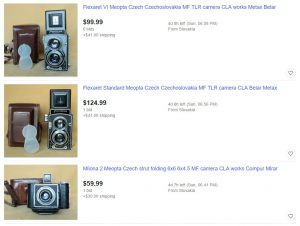
Cupog’s auctions are pretty easy to spot as they almost always have a familiar beige/yellow background, come from Slovakia, and almost always have been CLAd. He also seems to have a large selection of Flexarets, which makes sense as the Flexaret was built in Czechoslovakia.
I wanted to learn more about who this seller was, but reaching out to people through eBay’s messaging system is difficult as they filter out all forms of outside contact, but after calling on a favor from my friend Roger Beal, I was able to get an email address for cupog.
After I made contact, I found out that cupog is really Dr. Gejza Dunay, a former entomologist with a doctorate in zoology from the Pavol Jozef Šafárik University in Košice. Living in Slovakia with a 7 hour time difference and hectic schedule, plus the onset of COVID-19 caused several delays in being able to set aside an hour to talk, but I was finally able to chat with Gejza and here is a transcript of that conversation.
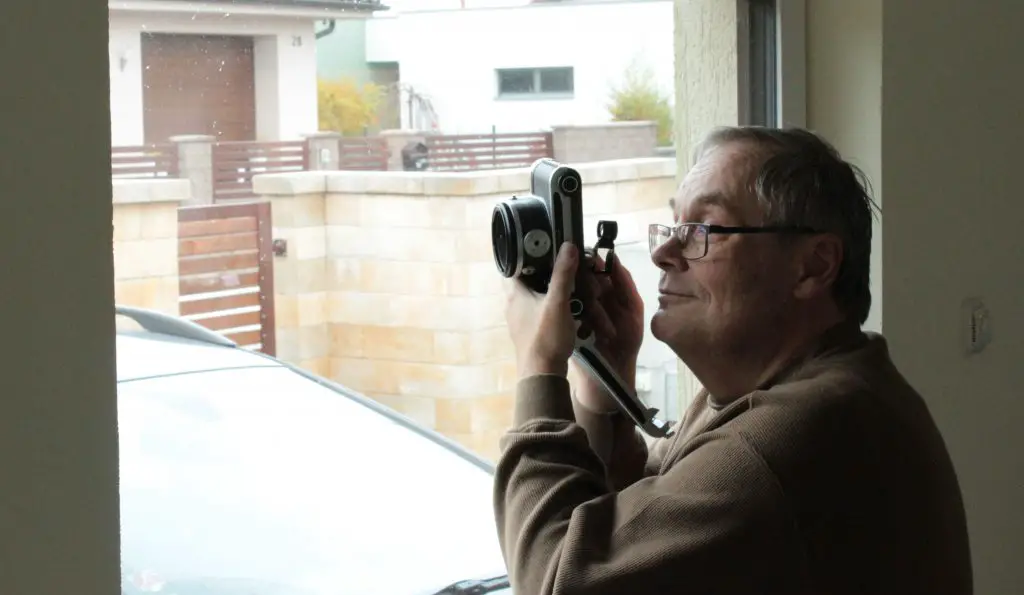
Mike E – Good morning Gejza, actually I guess it would be evening for you there! Thanks for taking the time to talk to me. Before we begin though, I don’t want to mispronounce your name, how exactly do you say it?
Gejza D – Thanks, Mike, my first name is pronounced “geh-za”, the “j’ is silent.
ME – Your name on eBay is ‘cupog’, does that mean anything?
GD – When I was younger, my nickname was ‘Cupo’ but when I registered with eBay, that name was already in use, so I just added a “G” at the end for my first name, and that’s how ‘cupog’ was born.
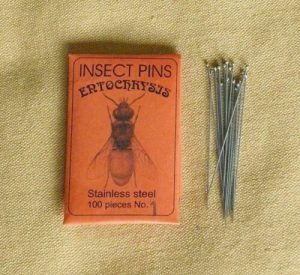
ME – I’ve seen that in addition to selling cameras on eBay you are also into bugs. It sounds like you’ve had an interesting career path, with a doctorate in zoology, working with insects, and now fixing cameras. How did that happen?
GD – I still enjoy studying and photographing insects. It has become my hobby now and repairing cameras is my full time job, but it used to be the other way around. In the 1990s after communism ended in Czechoslovakia, I worked at the university and salaries at the time were very low. I made less than 200 dollars a month at my job, but fixing cameras, I could make up to 10 times that much, so I decided to focus on repairing cameras full time.
ME – How long have you been repairing cameras?
GD – I’ve been making a living out of doing it for about 22 years, and maybe 5 to 10 years for part time money before that. It used to be that if you needed a camera to be repaired, the wait time was very long. Repairs would take 3 to 6 months, sometimes even longer so if something was easy, it would be much faster to just do it yourself. At first, I would do small repairs for friends and people I knew, and it grew from there. I eventually started selling on eBay in 1999 and have been there ever since.
ME – What kinds of cameras did you get started working on?
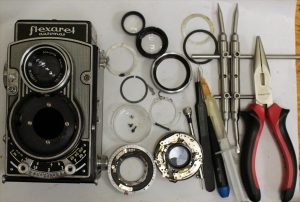
GD – There was a lot of pre-war German stuff, like Zeiss Ikontas, Weltas, and other folding cameras. Of course there were Czech cameras too, like Flexarets. The earlier Flexarets aren’t that hard to work on, but the VI and VIII took longer to learn.
ME – Do you do all of your work yourself or do you have people who help you out?
GD – I do everything myself. Years ago, I had a couple people who would help me with various tasks, but not anymore. This is my full time job, and I am my own boss, so I do everything myself.
ME – Do you ever communicate with other people who repair cameras for information or parts?
GD – Yes, there are a few other people that I stay in touch with if I need help. I have a friend in Vienna that I will go to if I need Rollei parts and he will come to me if he needs Flexaret or other parts he knows I have. Having a supply of spare parts is one of the most important things to have, as many cameras require a part to be replaced, and the only place to get them is another broken camera.
ME – What kinds of cameras are your specialty and are there any that you won’t touch?

GD – I work on all mechanical cameras. My favorite ones to do are Flexaret and Pentacon Six. I will not touch most electronic cameras, or those where the cost to repair is too high. Most Japanese and modern SLRs like the Canon AE1 just aren’t worth repairing. Although I can fix them, I often don’t bother with Prakticas as there’s so many other people who can fix them that I don’t bother. Some cameras like the Exakta 66 are very difficult to repair, but I’ll still take them on as they have high value and it’s worth my time. But otherwise I can do all kinds of TLRs, Rolleis, Leica, Contax, prewar German and Soviet cameras too.
ME – I’ve always wondered about repairing Contaxes as they seem to be more difficult than Leicas. I’ve heard that once the shutters go, you can’t fix them as there aren’t any replacement parts left.
GD – The most common problem with Contax and Kiev shutters is that the ribbons break. When that happens, I just make new ones.
ME – Wait a minute, you can make new Contax shutter ribbons? I didn’t think anyone did that.
GD – Yeah. I have the material here and I disassemble the original shutter and replace it with new material. Even if one side breaks, you always have to do them in pairs because if you only replace one side, the other is still weak and will eventually go soon after.
ME – Do you only sell cameras that you find and repair, or do people send you things to repair.
GD – I will repair anyone’s camera that wants to send them to me, but the problem is the cost. For shipping, it costs me 66 Euro for the customs forms to receive and send back a package. So in addition to my time and whatever parts I need to repair a camera, the price for the customs forms, plus shipping to whatever country the owner lives in, it’s usually not affordable to do.

ME – How has business been lately with the COVID-19 pandemic world wide? Have you noticed a change in demand?
GD – For a while there was a dip, but things seem to have picked up a bit. The bigger problem was with the postal service as Slovakia postal service wasn’t always reliable. At first, I could only ship to other EU countries, but things have gotten better with shipments to the United States and other countries. One country I still cant get things to is Australia. I could use FedEx, except it’s extremely expensive, I think like 200 Euro to ship to Australia.
ME – What countries do you sell most of your cameras to?
GD – The four biggest countries for me are the United States, China, Japan, and South Korea, but I’ve shipped cameras to as many as 40 different countries across the globe.
ME – Looking through the cameras you have for sale, I don’t ever see anything made by American companies like Argus or Kodak. Do you ever work on those?
GD – The only Kodaks I see are the German Retinas. I get a lot of earlier Retinas, but not as many of the later models. The early Retinas are pretty easy to repair.
ME – I previously did an interview like this with Chris Sherlock from retinarescue.com and we talked about the complexities of the Retina Reflex. Have you ever worked on one of those?
GD – I have, but the biggest problem with Retina Reflexes for me is not having the right replacement parts. For guys like Chris who specialize in them, it’s easier as he probably has access to replacement parts that I don’t.
ME – Do you ever have to make your own parts?
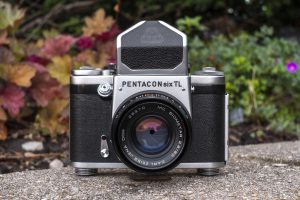
GD – On some older cameras with cloth focal plane shutters, appropriate material for the cloth curtains is not available, so if I can, I will disassemble the shutter, and soak the curtains in acetone to dissolve the old rubber material, and then I will recoat the cloth with a rubber material so that I can reuse it. Sometimes the curtain might only have a couple of small pinholes in them, and in those cases I will just patch them as it’s better to patch a curtain than trying to replace it altogether.
ME – How many cameras do you typically work on per week?
GD – It depends greatly on what model I am working on and what needs to be done. On an average week, I’d say 15-20 cameras, but that can change greatly depending on what I have. I can clean and repair a Flexaret II in about 2 hours. The later models like the VI take about 4 hours, but sometimes 6 or even 8 depending on how many issues it has. The Pentacon Six takes an even longer time.
ME – Earlier you mentioned the Exakta 66 was very complicated to repair, but what about the regular 35mm Exaktas?
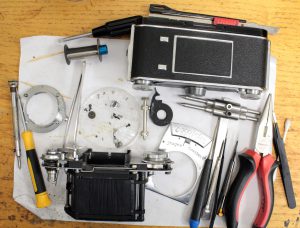
GD – Yes! I can repair 35mm Exaktas. Their design is very clever and not that hard to repair because you can separate the entire shutter mechanism from the body and work on it from all sides. It’s very much like screw mount Leicas and the Soviet copies in that regard. Compared to the Contax rangefinders or Pentacon SLRs, you have to get at the shutter only from one side. If you look at my auctions I often have at least a couple Exaktas for sale as they are easy to find.
ME – I know you are a big fan of the Pentacon Six. I was recently loaned one from another collector with a variety of lenses. I am most excited to shoot the wide angle Flektogon as you don’t often get to do wide angle on medium format.
GD – Yes, the Flektogon is a good lens, but it is very prone to flare. Make sure not to shoot in direct sunlight and if you do, have the sun to your back. Also, the front element on that lens sticks out almost to the edge of the filter ring and can be easily scratched, so be careful. Otherwise it’s a terrific system, but very heavy.
ME – I know the Soviet Kiev 6C is very similar to the Pentacon Six, how do you think they compare?

GD – The Kievs can be good when properly working, but they’re a lot noisier and have more vibration from the mirror. With a steady hand, you can shoot the Pentacon hand held at 1/15 without any shake, but the mirror slaps so hard on the Kiev, the slowest I would try to shoot hand held is about 1/60. Inside of them, the camera is just a little rougher too.
ME – What does the future hold for you? I’ve noticed that there are less specialized people repairing cameras these days. How long do you think you can keep going?
GD – Most people repairing cameras are old. I am 60 and many are older than me. I plan to keep repairing cameras as long as I can, but the two biggest issues people in my field face is eyesight and shaking hands. It is hard to work with all the small parts and precision tools when you can’t hold your hands steady. I hope to be able to keep doing this for many more years.
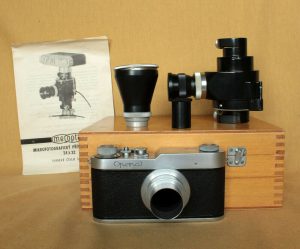
ME – Do you ever have time to shoot any film cameras or do you shoot digitally?
GD – When I go out, I shoot with a Canon DSLR. I mainly take photos of beetles and their habitats to relax, but I don’t have a lot of time for it.
ME – Is there a film scene in Slovakia like there is in other countries where younger people are re-discovering film?
GD – I think it’s similar here as it is in other countries. Some folks have artistic ambitions and work with film, but digital is so much easier, the percentages are still very small.
ME – Okay, it’s been about an hour. Gejza, I wanted to say thanks again for taking the time not only for this chat, but for all of the coordination it took to get this call going. We first started talking about doing this in February, and six months later we are finally able to do it. Thank you for your time!
Closing
Gejza was incredibly accommodating with all of my requests for this one hour interview and all of my follow up emails that followed. Although English is not his first language, communicating with him through email and over the phone was not a problem at all. His personality was extremely upbeat and he has a level of enthusiasm for what he does which shows in his work.
If you’d like to see what Gejza has for sale, the best place to contact him is through his eBay seller page for cupog. You can also send him an email at [email protected] if you like and he will do his best to answer. Keep in mind that Gejza receives upwards of 30 emails a day, so a response might take a little bit of time.

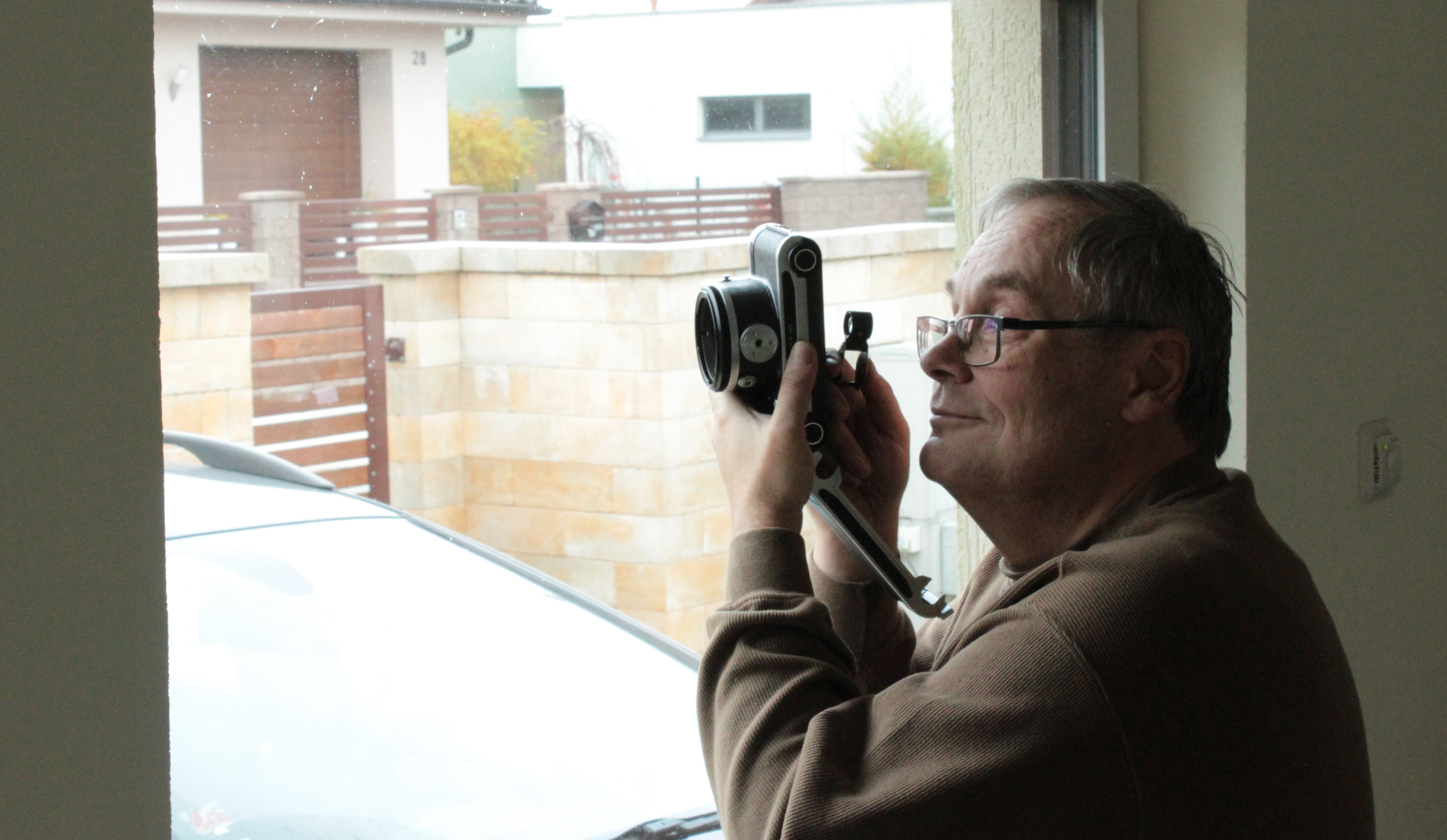
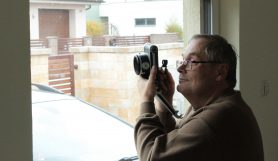
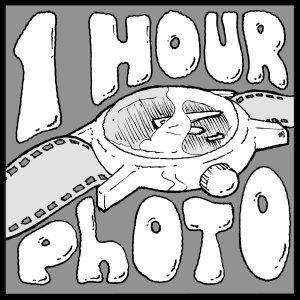
A good interview. His insight on camera repair parallels the camera repair industry everywhere. Most repairers are older. The Facebook group Learn Camera Repair is the only real source for knowledge and learning the trade. Monitored and run by professional camera repairmen we give only knowledgeable information while trying to debunk the scourge of “WD40 methods” floating around on the internet.
I have purchased many cameras and lenses over the years from cupog on Ebay, mostly East German varieties like Werras and Praktinas. He has always been very accommodating and accurate in his descriptions. Recently, as my buying has slowed, I still have him as a favorite seller and do check his site from time to time for what he has to offer. One of the major problems is the cost of shipping between Slovakia and the US, which has also slowed my buying habits. Great interview which shows his personality and the gentleman he is.
Gary Hill
Thanks for this interview, Mike. As the owner of four Flexarets, I have often wondered who cupog is. I’ve done some minor work on my own cameras, but if it weren’t for the shipping delays and costs I would definitely send them back to him for a real CLA.
I agree. Considering it’s $40-$50 just to ship something one way, the thought of me sending something to him, then having it sent back, is just too prohibitive!
Thanks for a very informative interview. I learned that Dr. Dunay is a one-man operation, and that he is younger than I expected him to be. I’ve bought about a half dozen cameras from him over the past 15 years; his offerings are accurately described and well-repaired. His problem with arthritis is shared by many of us geezers, who find it necessary to use tweezers and loupes where formerly fingertips and the naked eye would suffice.
Yeah, I was surprised that he did everything himself, but as this is his only source of income, and it’s not unusual for people to spend 50-60 hours a week at their primary job, so it makes sense!
Interesting as I have had Cupog on my Ebay saved seller list for 16 years now and have bought from him. Being an entomologist explains why some of his items are pins for sticking insects to boards.
Once again – well done Mike. Your website is a service to the film community.
I recently bought a lens from this ebayer, so far my experience has been good. However, this time I have not heard from this seller after payment. Very disappointed and complained to Ebay, Gezja even blocked my email after emailing him several times, in other words I was scammed by this gentleman….meanwhile I have left a negative feedback as a warning for future buyers !!
I have bought many cameras from Mr. or should I say Dr. Dunay going back over the last twenty years. He is always accommodating and he even helped me with some repairs if my own by sharing info in emails. Excellent! I have a full Flexaret collection all in perfect working order thanks to Dr. Dunay, and the latest Flexaret with all the cool accessories. A great system. Luckily, I made most of these purchases when shipping was still very affordable. I am glad to see that he is still working and still in business and busy.
Joseph Long
Glad to hear you’ve had a great experience with Dr. Dunay. Although I enjoyed my conversation with him and love referring people to his store, I haven’t personally ever bought anything from him.